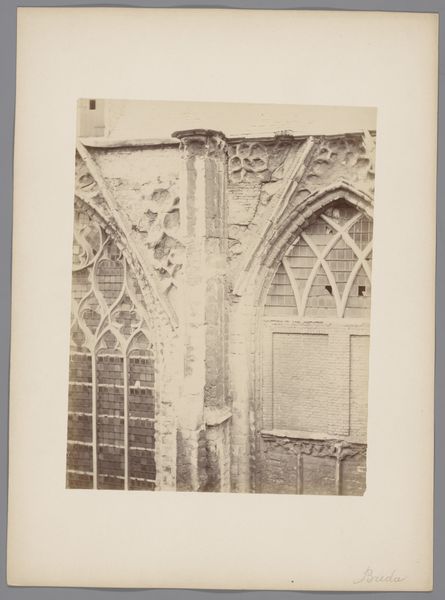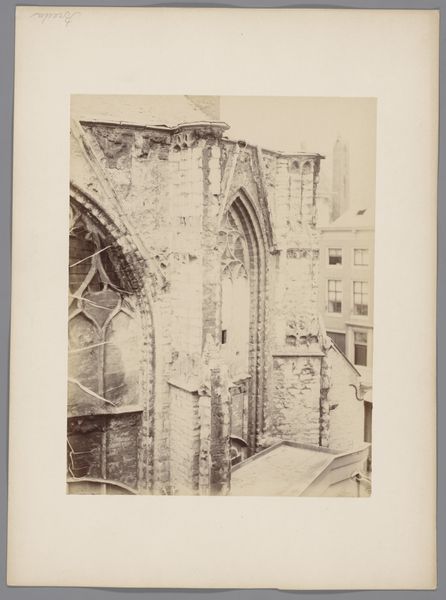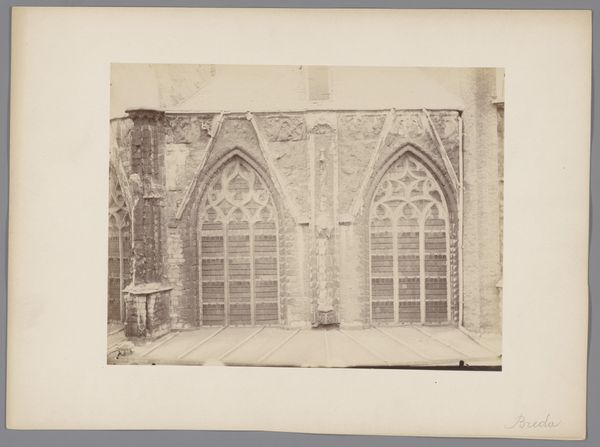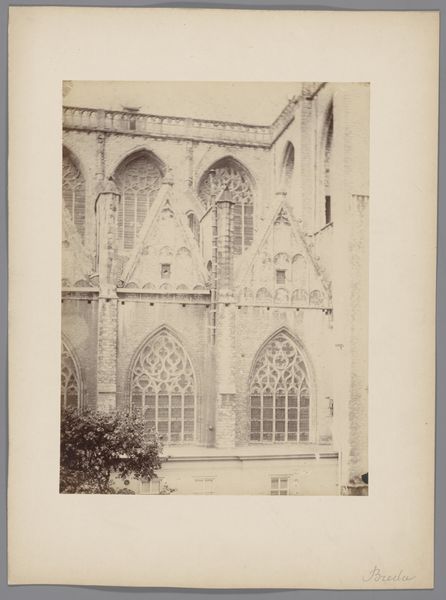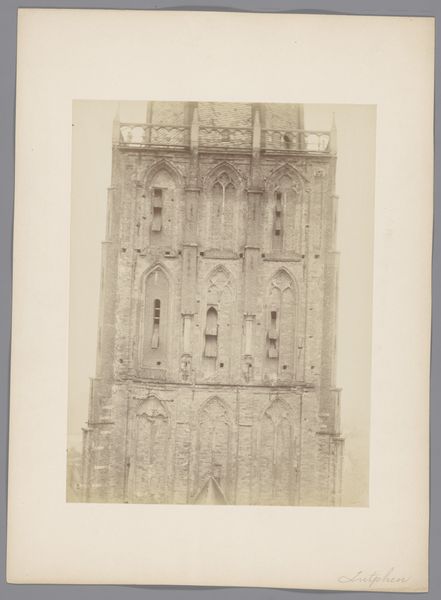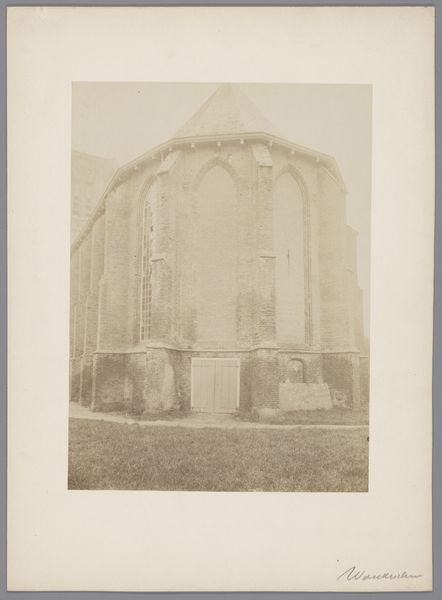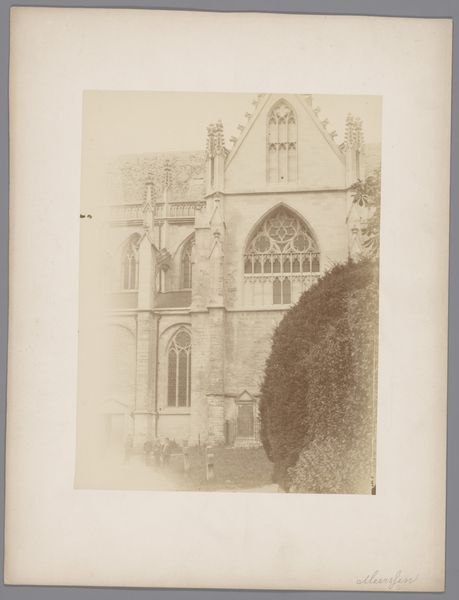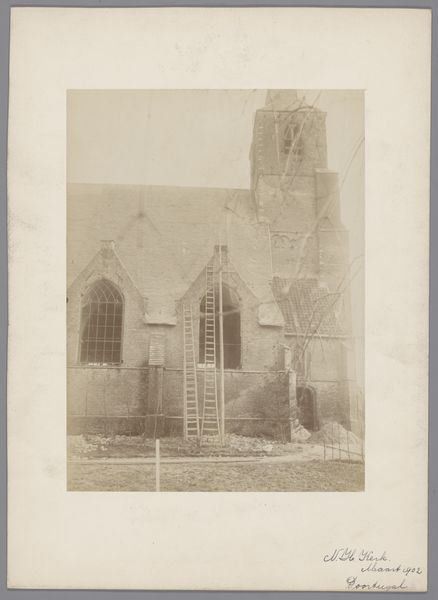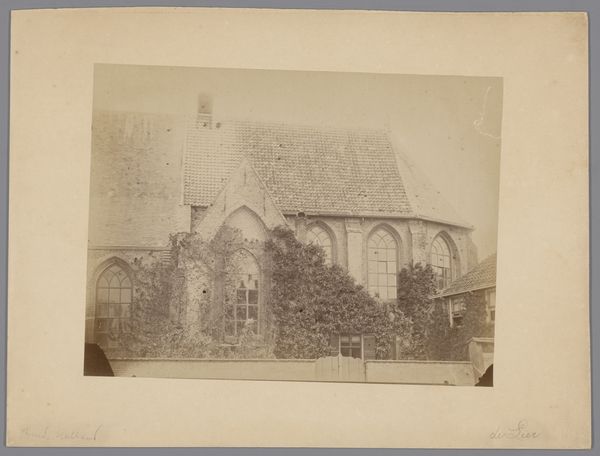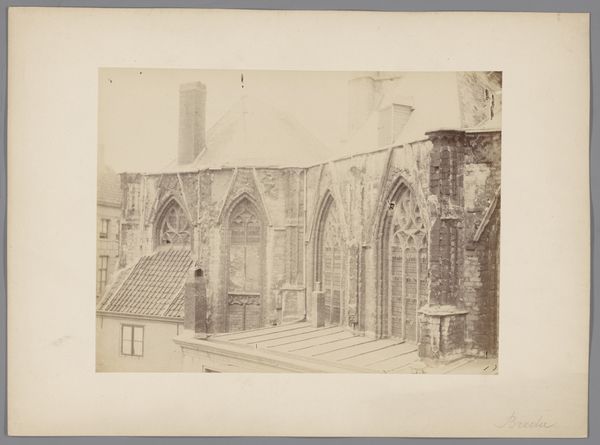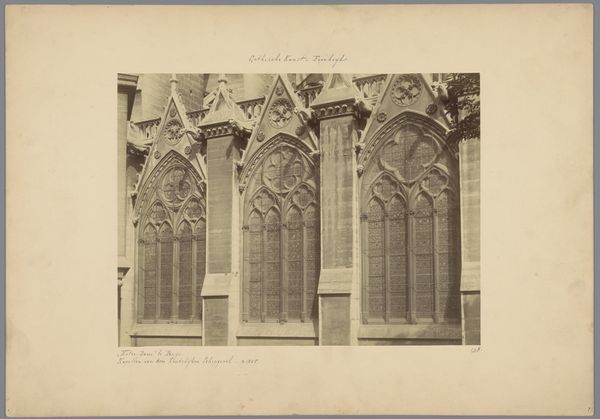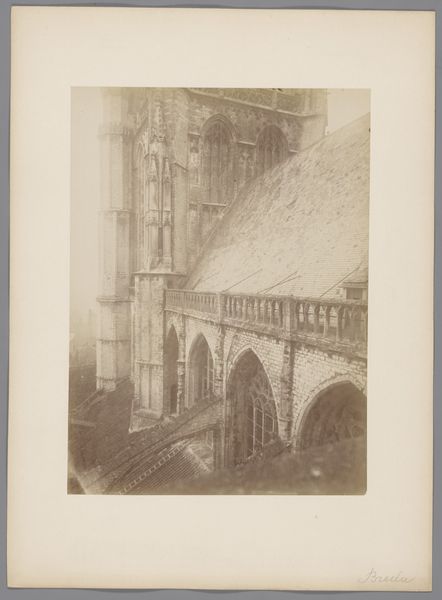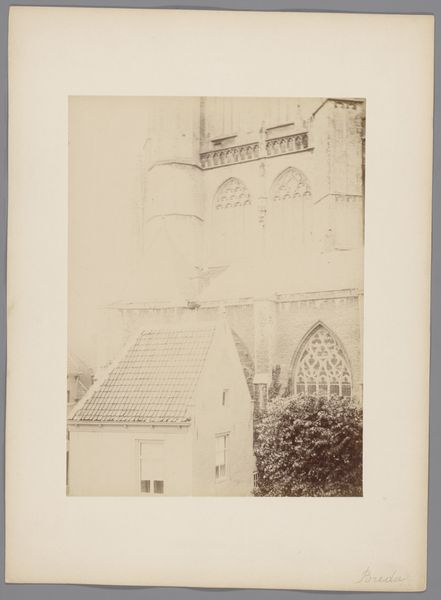
Dimensions: height 229 mm, width 174 mm
Copyright: Rijks Museum: Open Domain
Curator: This photograph, titled "Gedeelte van de Grote Kerk te Breda," gives us a glimpse into the architectural details of a significant Dutch church sometime between 1890 and 1920. What catches your eye initially? Editor: The stone! I'm immediately drawn to the textures, the way it’s crumbling. There’s something both monumental and fragile about it. The window’s decorative details—are they original or later additions? Curator: Based on its gothic style, the architectural elements and embellishments visible here are consistent with the church's original design which dates back to the 15th century. Consider the social context, though: Late 19th-century photography made such intricate studies of architecture more accessible. It was about democratizing knowledge of craftsmanship. Editor: True. And perhaps fetishizing decay? It has that feel to me – a certain romanticism around the impermanence of things, that inevitable wearing down that time inflicts. I wonder who the masons were, the unsung heroes whose labor gave form to this imposing structure? Curator: Exactly. Their skilled labor is rendered invisible here, overshadowed by the architectural grandeur, while the photographic process itself demanded time, precision, and particular chemical components. So, labor is twofold but who's getting credit? Editor: It’s beautiful and a little melancholic, like staring at a ghost. All that craft, now weathered, framed for posterity, for a long stare... How did viewing it affect folks in that historical moment, and how might it shape future understandings of historical preservation? Curator: Good questions. It likely offered a chance to marvel at enduring craftsmanship while documenting, through relatively accessible media, architectural shifts across town or country—linking design processes with the larger economic impact they might cause for building production overall. Editor: And for me, it ignites thoughts on legacy and impermanence. Even in its fragmented form, the photograph evokes feelings beyond its technical aspects – maybe that’s why certain architecture photography has stuck around. Curator: Perhaps. Ultimately, though, our different readings remind us about how any analysis relies, inextricably, on specific vantage points and pre-dispositions, don't you think?
Comments
No comments
Be the first to comment and join the conversation on the ultimate creative platform.
